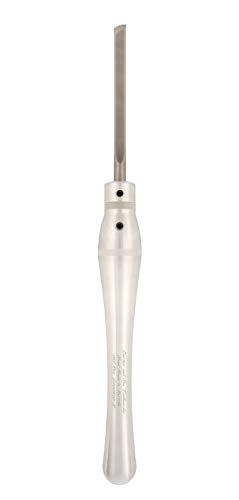If you’re looking to elevate your woodworking skills, the skew chisel might just be your new best friend. This seemingly simple tool is a game-changer, offering precision and versatility that few other tools can match. Whether you’re shaping intricate details or achieving smooth finishes, the skew chisel unlocks possibilities that take your craftsmanship to the next level.
But mastering the skew chisel isn’t just about picking it up and going to work—it’s about understanding its unique design and endless potential. Once you learn how to wield it properly, you’ll wonder how you ever worked without it. Ready to discover why this tool deserves a prime spot in your workshop? Let’s jump into what makes the skew chisel so indispensable.
What Is A Skew Chisel?
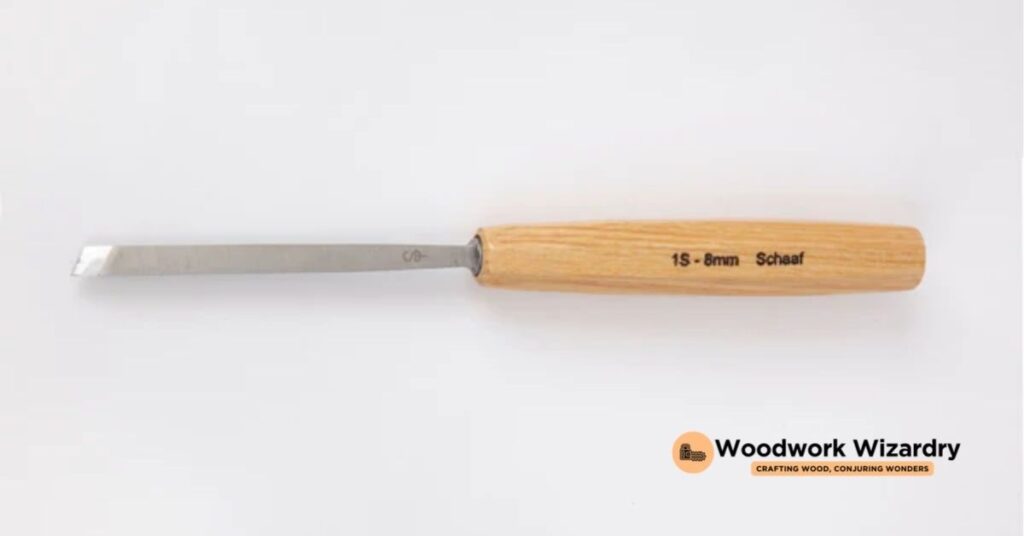
A skew chisel is a woodworking tool designed with a long, flat blade and an angled cutting edge. Its distinguishing feature lies in the skewed cutting edge, which forms an acute angle with the length of the blade. This design makes it highly effective for detailed and precision cuts.
Skew chisels excel at tasks such as planing, trimming, and shaping wood. For example, they allow smooth cuts on spindles, beads, or other intricate wooden shapes. Their versatility is evident in both roughing and finishing tasks, making them indispensable in lathe work.
Manufacturers create skew chisels in various widths and bevel angles to suit different applications. Thin blades perform well for delicate work, while wider ones handle heavier cuts. Beveled edges on both sides help smooth, controlled movements for improved accuracy.
Using a skew chisel requires proper technique to achieve the desired results. Improper handling may lead to uneven cuts or wood tear-out. By mastering its use, you unlock a tool that provides unmatched precision for woodworking projects.
Features Of The Versatile Skew Chisel
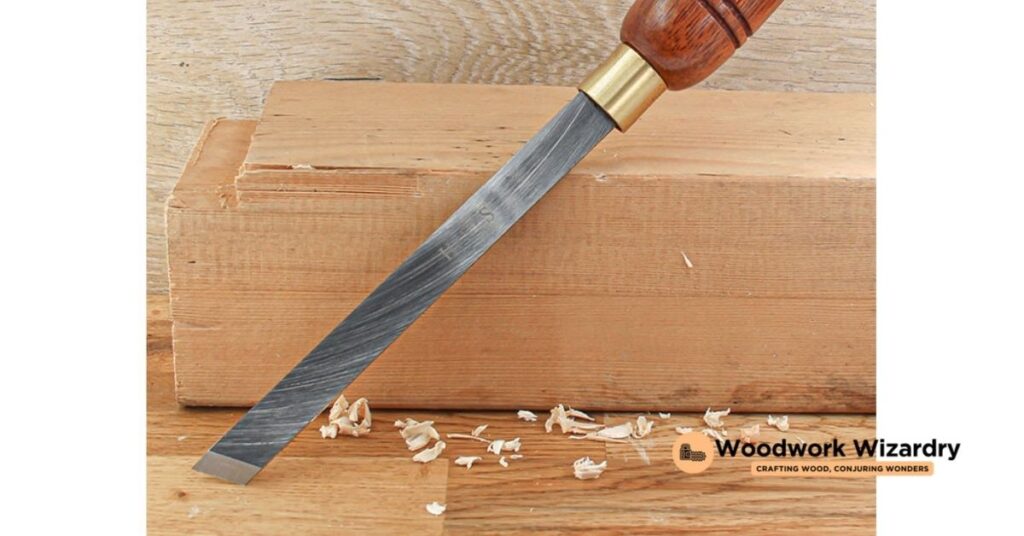
The skew chisel combines precise craftsmanship with diverse functionality, making it a standout tool for woodworking enthusiasts. Its unique features enhance control, accuracy, and versatility in various woodworking tasks.
Blade Composition
The blade of a skew chisel is crafted for durability and sharpness to ensure smooth, clean cuts. High-carbon steel is commonly used, offering excellent edge retention and reduced wear during frequent use. Stainless steel blades are also preferred for their rust-resistant properties, particularly in humid conditions. Polished surfaces on premium blades minimize friction while cutting.
Handle Design
Handles are designed for comfort and secure grip to help long hours of work without strain. Hardwood is often used for its strength and resistance to splitting, with oak and ash being popular options. Some handles include ergonomic shaping to improve control and reduce fatigue. Additional features like brass or stainless steel ferrules add stability and prevent cracking under pressure.
Angles And Profiles
Skew chisels come with varied cutting angles and profiles to support a range of applications. The cutting edge typically features bevel angles between 20 and 30 degrees for a balance of sharpness and durability. Different profiles, including flat, oval, and round tangs, provide flexibility for tasks like spindle work or bead creation. Choosing the right angle and profile ensures optimal performance in exact woodworking projects.
Uses Of The Skew Chisel
The skew chisel serves multiple purposes, making it an indispensable tool in woodworking. Its unique design allows for precise and versatile applications in various tasks.
Woodturning
You can use the skew chisel to create smooth, flawless finishes on turning projects. It excels at refining cylindrical surfaces and shaping intricate components like spindles and bowls. This tool produces clean cuts by slicing through wood fibers, minimizing tear-out. When crafting chair legs, table spindles, or pens, the skew chisel ensures accuracy and detail.
Smoothing And Trimming
The skew chisel offers sharp, efficient performance during smoothing and trimming work. It removes rough edges, refines cuts, and shapes end grains without tearing. You’ll find it especially useful for flattening uneven surfaces and chamfering sharp edges. Projects like fitting joints or paring down protrusions benefit greatly from the tool’s precision.
Decorative Details
Adding decorative elements becomes seamless with the skew chisel. Its angled blade allows you to carve beads, V-cuts, and fluting into wood with precision. Whether you’re improving furniture or crafting ornamental designs, it provides control over delicate detailing. You can use thinner blades for intricate carvings or broader ones for bolder patterns, ensuring versatility for artwork or custom projects.
Advantages Of The Skew Chisel
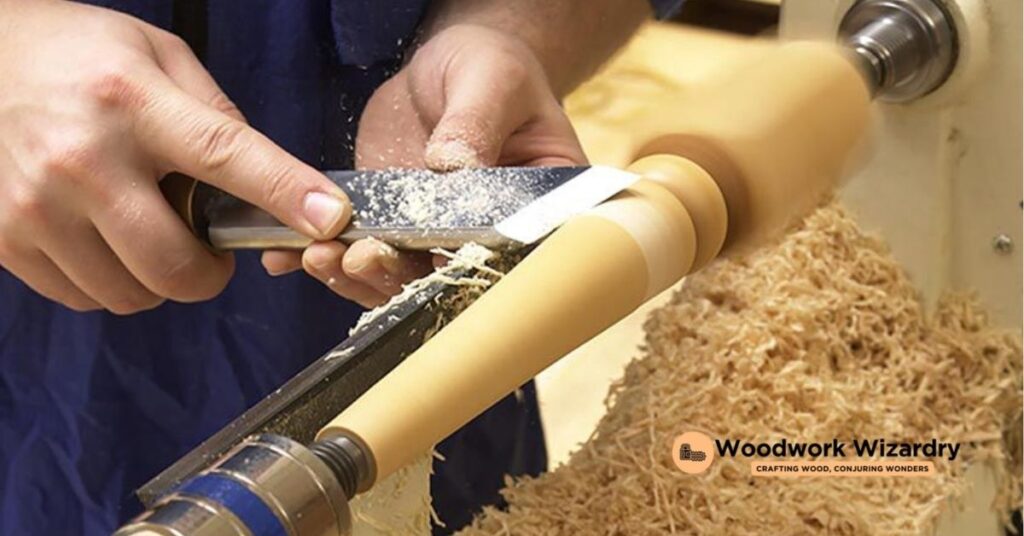
You gain unmatched precision when using a skew chisel for woodworking tasks. Its angled cutting edge delivers smooth, clean cuts, making it ideal for intricate detailing. This tool ensures minimal tear-out, even on challenging projects like spindles or beads.
Mastering the skew chisel enhances your efficiency. Its versatility allows you to perform planing, trimming, and shaping with one tool, reducing the need for multiple instruments. This adaptability makes it indispensable in crafting both functional and decorative pieces.
The skew chisel offers superior finishes on wood surfaces. Its polished blade glides effortlessly, minimizing friction and leaving a flawless result. High-carbon or stainless steel composition further provides durability, ensuring long-lasting sharpness.
Comfort is prioritized with skew chisel designs. Ergonomic handles, often made from hardwoods like oak, help reduce fatigue during extended use. A secure grip ensures better control, preventing slips that could damage your work or the tool.
Having a variety of widths and bevel angles at your disposal ensures adaptability. Thin blades allow for delicate work, while wider blades handle tougher cuts. This range of options ensures the skew chisel suits beginner and professional woodworkers alike.
Challenges And How To Overcome Them
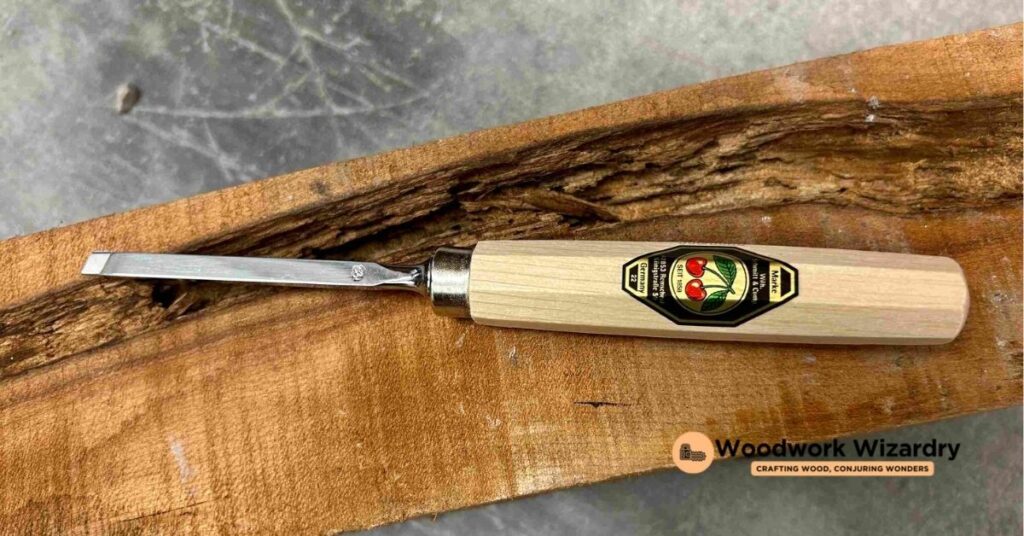
Using a skew chisel effectively can be challenging, especially for beginners. Mastering the correct angle of approach proves vital since an improper angle often results in wood tear-out or rough surfaces. Focus on maintaining consistent contact between the bevel and the workpiece to avoid these issues.
Achieving control during cuts is another common challenge. Excessive pressure or incorrect grip leads to uneven or gouged cuts. Practice light, controlled movements while ensuring your grip is firm but relaxed to improve precision and reduce errors.
Sharpening a skew chisel demands accuracy, as dull edges compromise its performance. Use sharpening stones or systems designed for fine tools to maintain the blade’s sharpness. Follow the bevel angle exact to your chisel’s design for the best results.
Cuts on curved or intricate shapes can feel intimidating. Mistakes happen when the blade catches or digs into the wood. Reduce this risk by practicing simple cuts on scrap wood, gradually progressing to more complex projects.
Some wood types, especially hardwoods, can resist a smooth cut. The polished blade surface and a correctly sharpened edge help minimize friction and ensure cleaner results. Select a blade width and bevel angle based on the wood’s hardness to simplify your task.
Conclusion
The skew chisel is more than just a woodworking tool; it’s a gateway to precision and creativity. Its unique design and versatility make it an indispensable addition to your workshop, whether you’re crafting intricate details or refining larger projects.
By investing time in mastering its techniques and maintaining its sharpness, you’ll unlock its full potential and elevate the quality of your work. The skew chisel offers both functionality and artistry, empowering you to tackle a variety of tasks with confidence and finesse.





